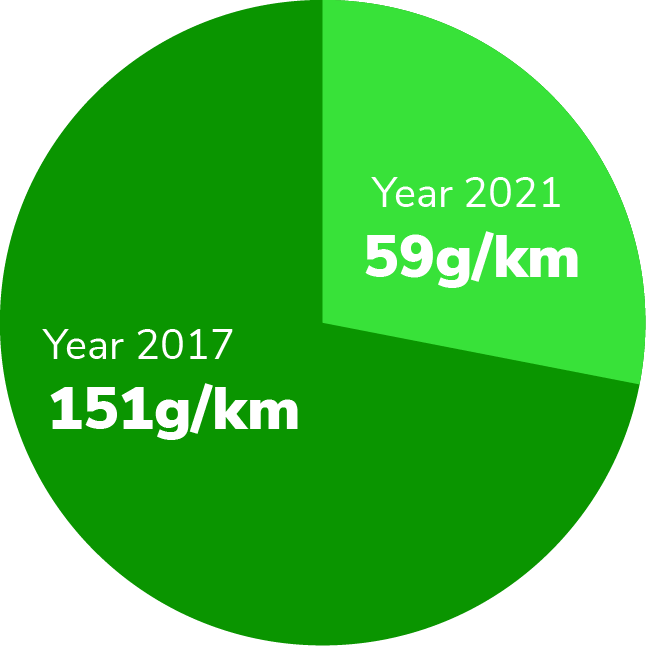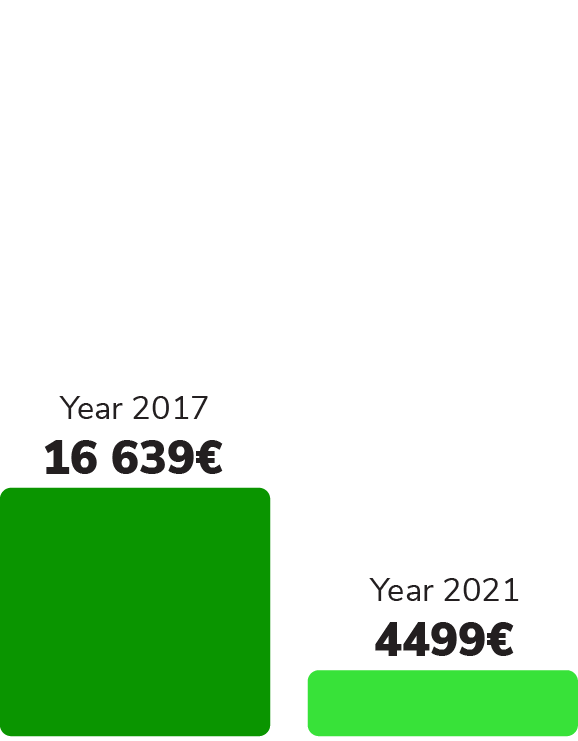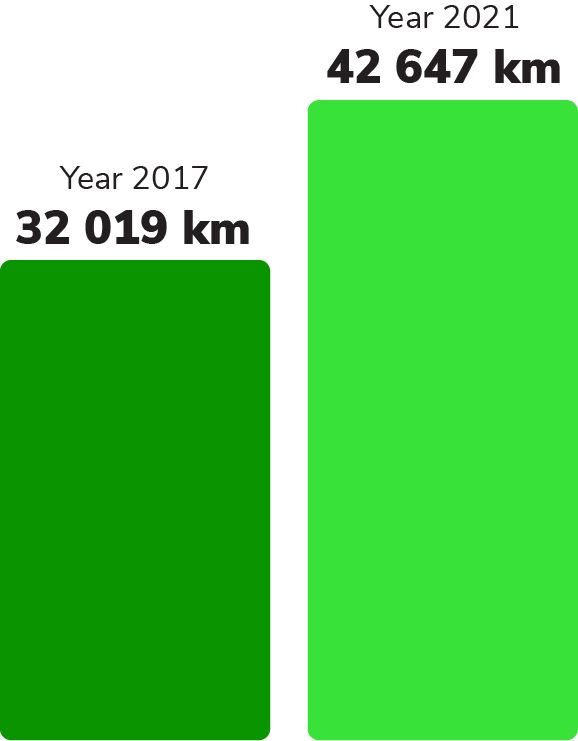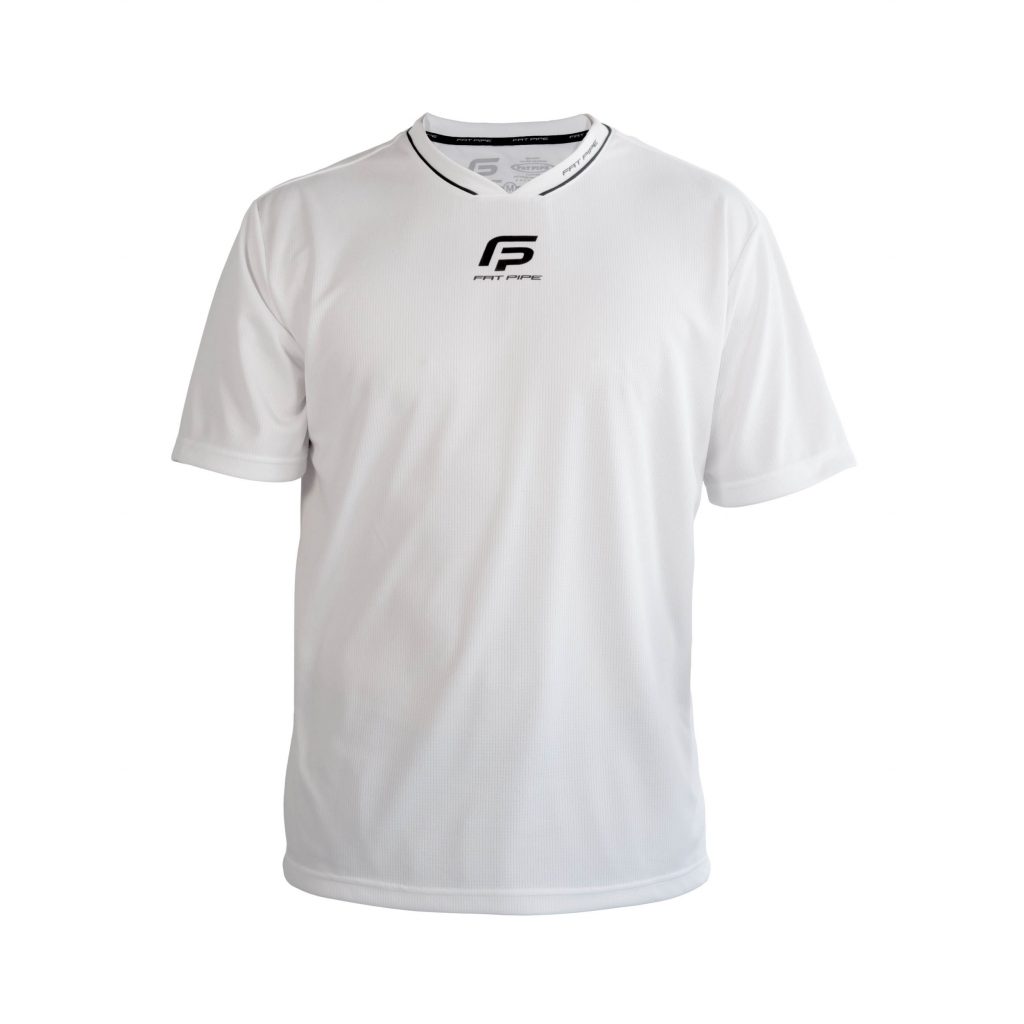
We participated in the role of sportswear brand in the Circular Design Network (CircDNet) project funded by the Finnish Academy, in which scholars collaborated with various stakeholders in examining connections related to circular economy and life cycle assessments (LCA) of products.
As the project progressed, our confidence in the quality and sustainability of our shirt grew ever stronger. It is a long-lived product designed for use and purchased for a specific need, hence steering clear of issues associated with fast fashion.
In 2021, we calculated our carbon footprint in collaboration with the Helsinki Metropolitan Area Reuse Centre (Pääkaupunkiseudun Kierrätyskeskus). It is roughly 1,125 metric tons of CO₂e, which corresponds to the annual carbon emissions of around 118 average Finns.
(The carbon footprint of Fat Pipe was calculated by the Helsinki Metropolitan Area Reuse Centre [Pääkaupunkiseudun Kierrätyskeskus]. The calculations were performed in accordance with the GHG Protocol Corporate Accounting and Reporting Standard.)
Given that we are a producer and supplier of consumer goods, the majority, i.e., nearly 90%, of our emissions obviously arise from the procurement of goods to be retailed as well as the use and disposal of sold products. The main sources of emissions include the production of raw materials, the manufacturing processes of materials as well as the cycle of use of textiles, washing and drying in particular.
The electricity procured for Fat Pipe’s office comes from hydroelectric power, a renewable energy source with very low levels of emission. The emissions from our purchased energy amounted to 3.5% of our entire carbon footprint. By using renewable electric power, we avoided producing over 14 metric tons of greenhouse gas emissions. The reduction of emissions is equivalent to the carbon emissions of an average Finn over a period of 1.5 years.
By making the switch to low-emission vehicles and by decreasing the number of company cars after 2017, we have managed to shrink our carbon dioxide emissions from cars by over 60%.
Other transport-related emissions from Fat Pipe’s operations are generated by the transportation of goods from factories to our warehouse, and from us to the consumer. We strive to organize transportation by sea and land with as low emissions as possible.
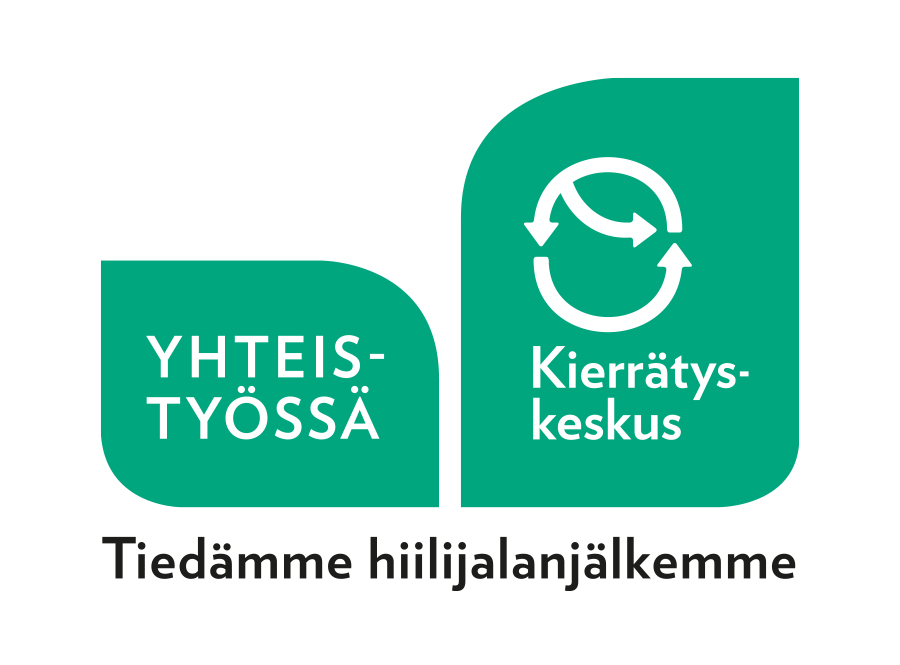

We participated in the role of sportswear brand in the Circular Design Network (CircDNet) project funded by the Finnish Academy, in which scholars collaborated with various stakeholders in examining connections related to circular economy and life cycle assessments (LCA) of products. For the study, we collected data on our polyester player’s shirt. In addition to the product’s carbon footprint, the project also reflected on other sustainability and environmental impacts.
(Horn, S., Mölsä, K, Sorvari, J., Tuovila, H., and Heikkilä, P. (forthcoming) Environmental sustainability assessment of a polyester T-shirt, comparison of circularity strategies. SYKE, VTT)
As the project progressed, our confidence in the quality and sustainability of our shirt grew ever stronger. It is a long-lived product designed for use and purchased for a specific need, hence steering clear of issues associated with fast fashion. The carbon footprint of our polyester shirt is 0.03kg of CO₂e per instance of use. That amounts to a mere third of the carbon footprint of a Cotton T-shirt, for example (Sandin, G., Roos, G., Spak, B., Zamani, B., and Peters, G., 2019. Environmental assessment of Swedish clothing consumption. Mistra Future Fashion report number: 2019:05), owing to the long life span of our shirt, during which it will be used at least 200 times.
The project also made us reflect on the care instructions and the materials of our textile products. The calculations revealed what a significant impact the different stages of use, such as washing and drying, can have on the product’s carbon footprint. If the user of our product could reduce the number of washes by half, it would do away with 35% of the shirt’s environmental impact, ranging from climate change and the depletion of natural resources to the eutrophication of freshwater.
Furthermore, the results prompted us to consider partially replacing the polyester we use with recycled polyester, as well as to ponder recycling and repurposing opportunities by the time the garment is classified as textile waste. Currently, using recycled polyester fiber as a material in Fat Pipe shirts would increase its production costs significantly, which in turn would hike up its retail price to an unreasonable level for the consumer. However, we nevertheless continue to explore and test further ecological alternatives in collaboration with our manufacturers. As responsible values continue to gain global momentum, we hold on to our strong belief in the future opportunities of recycled and more environmentally friendly materials in both high-street and brand sportswear, as well as the improved possibilities for recycling, reusing and disposing of textile waste ever more sustainably.
All Fat Pipe products are designed in Finland. Our domestic roots have received due recognition: our sticks have been awarded the Key Flag Symbol (Avainlippu), while our textiles carry the Design from Finland mark. The Key Flag Symbol and Design from Finland mark are awarded by Association of Finnish Work to products or services that meet the required degree of Finnishness.
The Key Flag Symbol signals to consumers that the product is designed and manufactured in Finland. The Design from Finland mark, for its part, indicates that the product has been designed and developed in Finland, but manufactured elsewhere. The holders of these symbols are committed to sustainability, as well to as abiding by specific standards in their production processes.
The design, product development and assembly of Fat Pipe’s sticks takes place in Finland; in the neighborhood of Vartiokylä in the capital, Helsinki, to be precise. For availability-related reasons, the manufacturing of our grips and shafts is outsourced to our partners abroad. Nonetheless, the look and technical properties of the grips and shafts are designed by us.
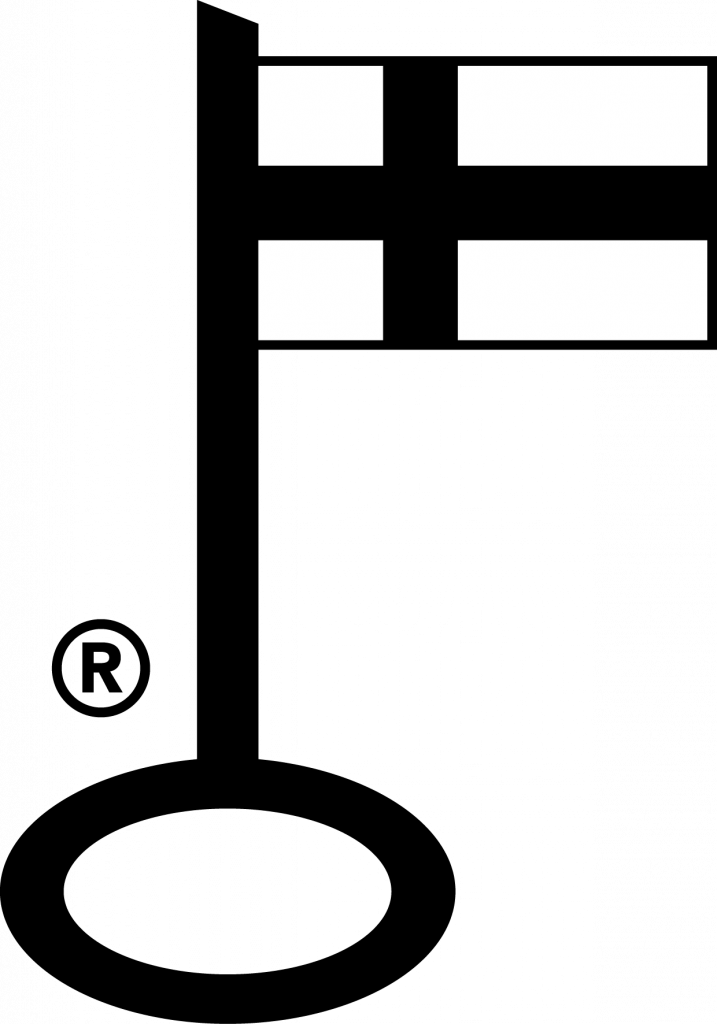
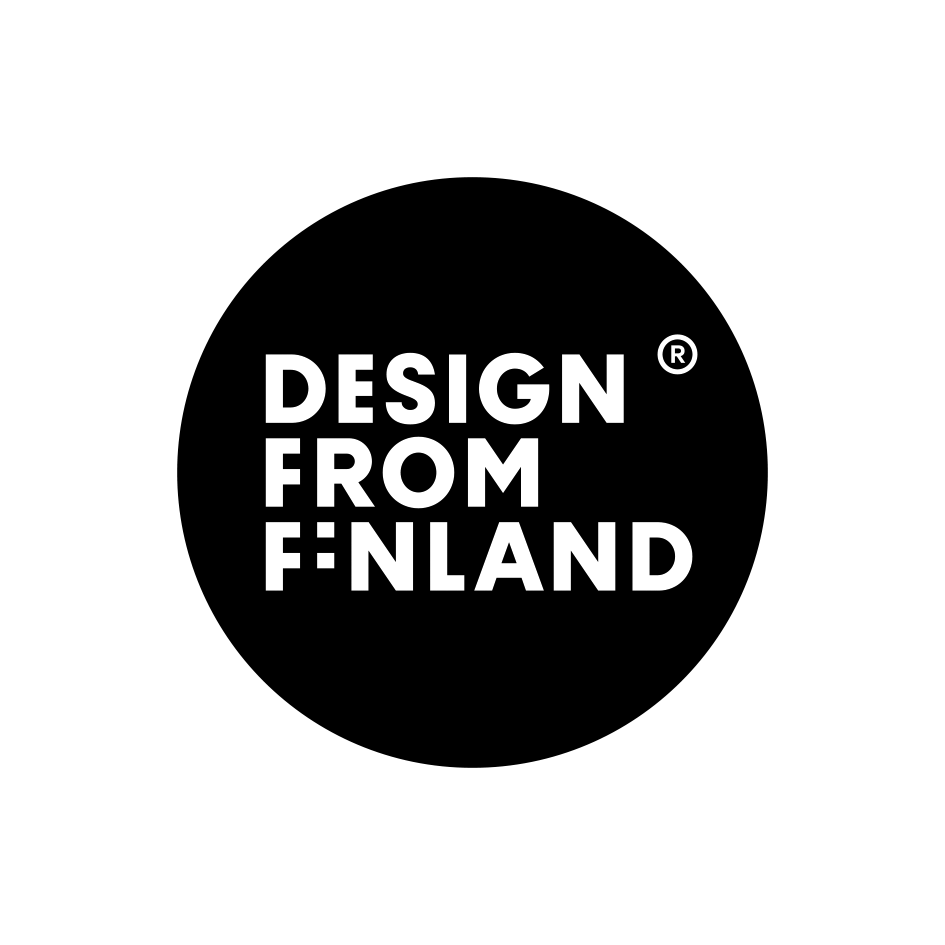
The design process of Fat Pipe textiles is a Vartiokylä-based team effort between the designer and floorball experts. Fat Pipe textile collections are designed to be long-lasting, durable and functional sportswear and gear, and they are tested and developed in collaboration with league- and hobby-level players. Collections are updated annually, but a selection of models live on for several years and are updated only in terms of logo design and color scheme.
Fat Pipe sportswear, gear and equipment are manufactured in China, Taiwan, India, Pakistan and Czechia. We have reliable factories in these countries that help us find the right materials and of course manufacture our products. We are currently looking into possibilities of relocating more of our textile production to Europe.
We monitor our products’ quality and compliance with applicable standards by ourselves, and we meet with our factories’ representatives from time to time on site and at international exhibitions. All of our factories comply with the European Union’s REACH (Registration, Evaluation, Authorization and Restriction of Chemicals) regulations, at the least. To a varying degree, our manufacturers also hold ethical and sustainable development certificates based on audits carried out by various corporate responsibility organizations.
All Fat Pipe textile products are made of high-quality and rigorously tested materials. Sensible material choices prolong the life span of our textiles. Synthetic fibers and blended materials are commonly used in sportswear. Synthetic fibers give garments desirable characteristics like strength, durability, malleability, form retention and versatility.
Polyester, for example, is one of the most widely used fibers in the world, and it is used to amplify the existing good qualities of woven or knit fabrics, such as comfort, color retention and shorter drying time. While the use of oil-based polyester fibers is questioned in our modern sustainability oriented world, it also extends the life span of products and facilitates material recovery.
The Circular Design Network (CircDNet) is a project funded by the Finnish Academy, in which scholars team up with various stakeholders in order to explore connections related to the circular economy and life cycle assessments (LCA) of products. In collaboration with the Finnish Environment Institute SYKE, we had the opportunity to take part in the project with our own Fat Pipe polyester shirt. In addition to carbon footprints, the project also reflected on other aspects of sustainability and environmental impact. The carbon footprint of our polyester shirt is 0.03kg CO₂e per instance of use, based on around 200 uses during its life span. Read more about our participation in the project here:
The Circular Design Network project and life cycle assessment for our Fat Pipe polyester shirt.
The ecological impact of a textile product is influenced by the environmental load from its entire life cycle, including, among others, energy efficiency during manufacturing, life span and timelessness, as well as prospects for recycling and reusing materials. Fat Pipe sportswear and gear are made of durable materials in consideration of their intended use.
Our wearable textiles (alternatively, their packaging) include product descriptions, instructions for care and information on the country of manufacture. The usability of textiles can be maximized by following the care instructions as well as regularly maintaining the products. Every single time synthetic fibers are machine washed, they release harmful microplastics into our environment. Waste water treatment plants are not able to filter them out efficiently. Using a laundry bag that collects microplastics helps in preventing these harmful plastics from entering our waterways, and they also improve the life span of the product itself. Microplastics that build up in the laundry bag can then easily be recycled appropriately.
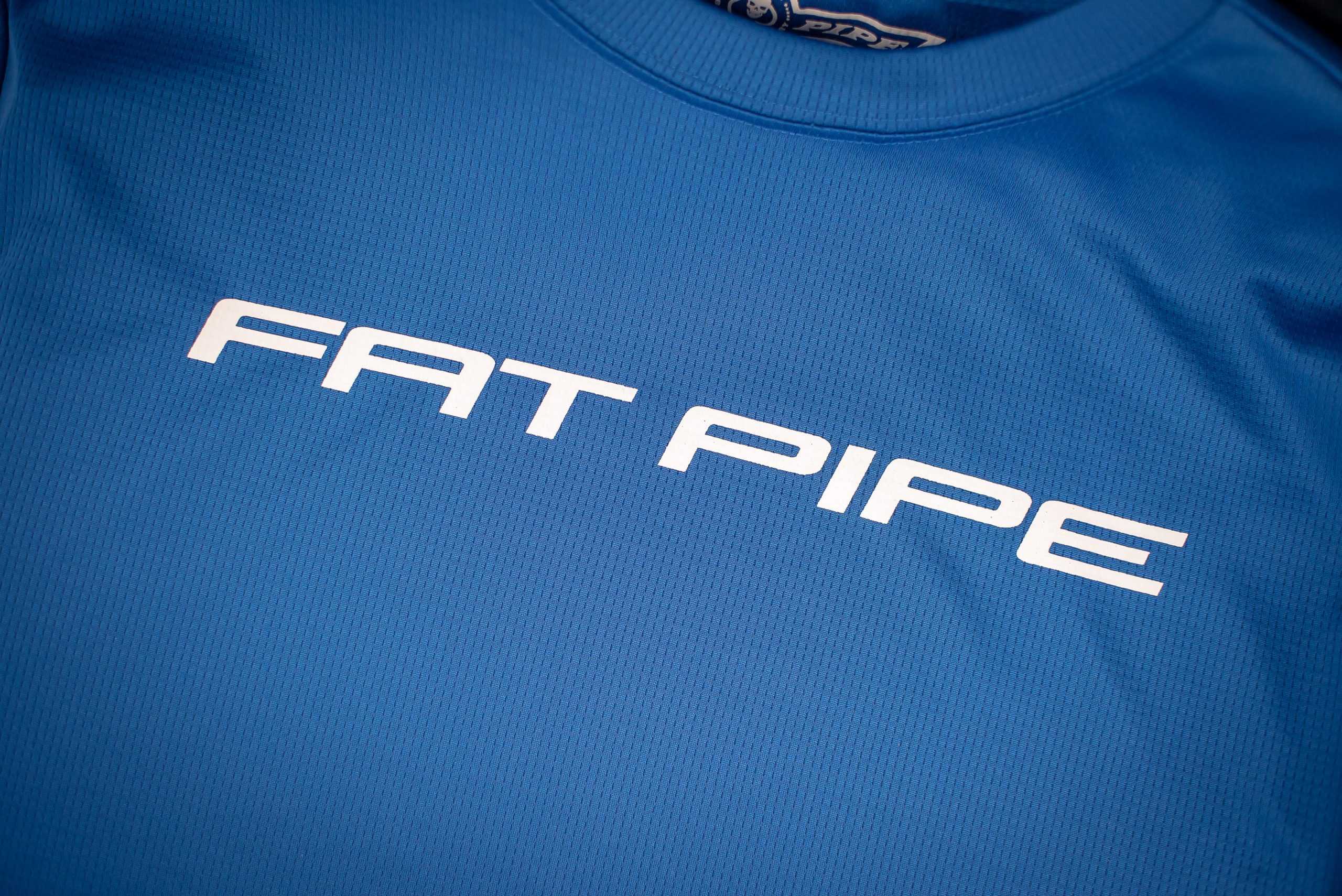
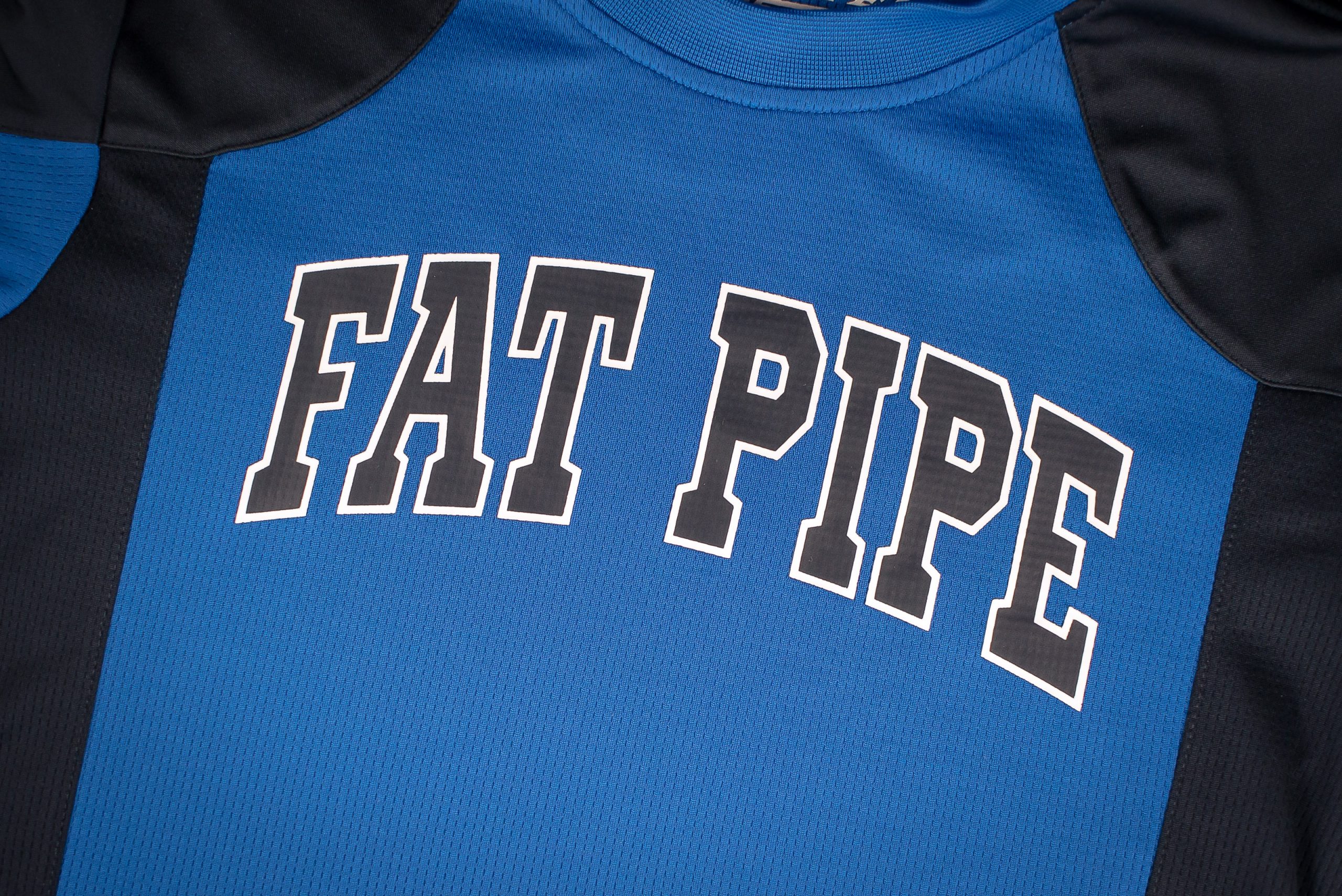
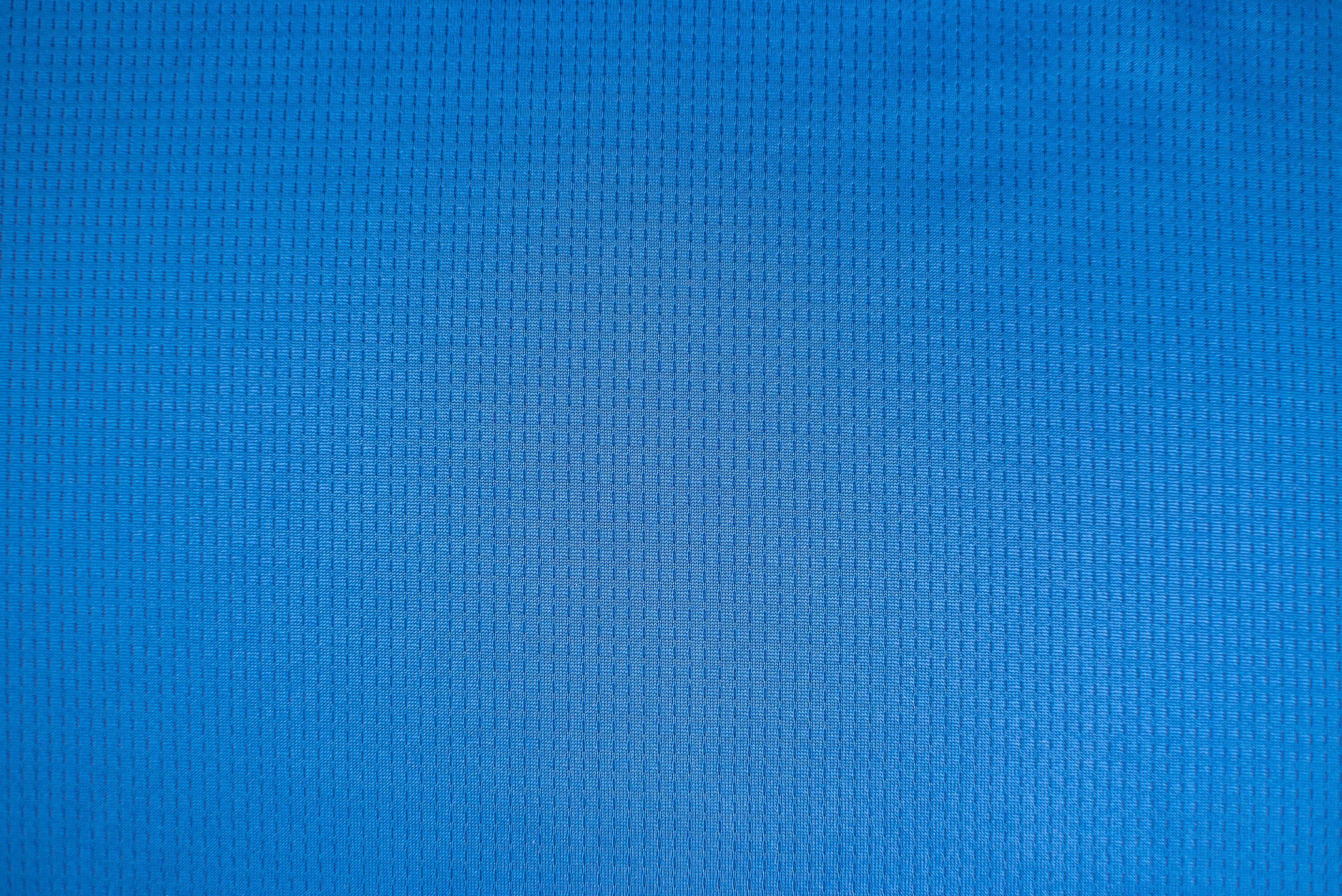

We have sought to minimize the use of plastics in the packaging of Fat Pipe sportswear, gear and equipment. We cannot go completely plastic-free for all of our textile products, as they are exposed to dust and moisture during transportation, and the plastic is necessary for protecting the product from damage along the way.
In 2020, we changed the packaging methods for the majority of Fat Pipe garments, and our products now fit into 50–60% smaller plastic packages. In the future, all Fat Pipe accessories, such as socks, wristbands and headbands, will come in plastic-free cardboard packages. We embarked on this mission in 2019. Our helmets come in a plastic-free textile bag which can be used as a nifty transportation and storage bag.
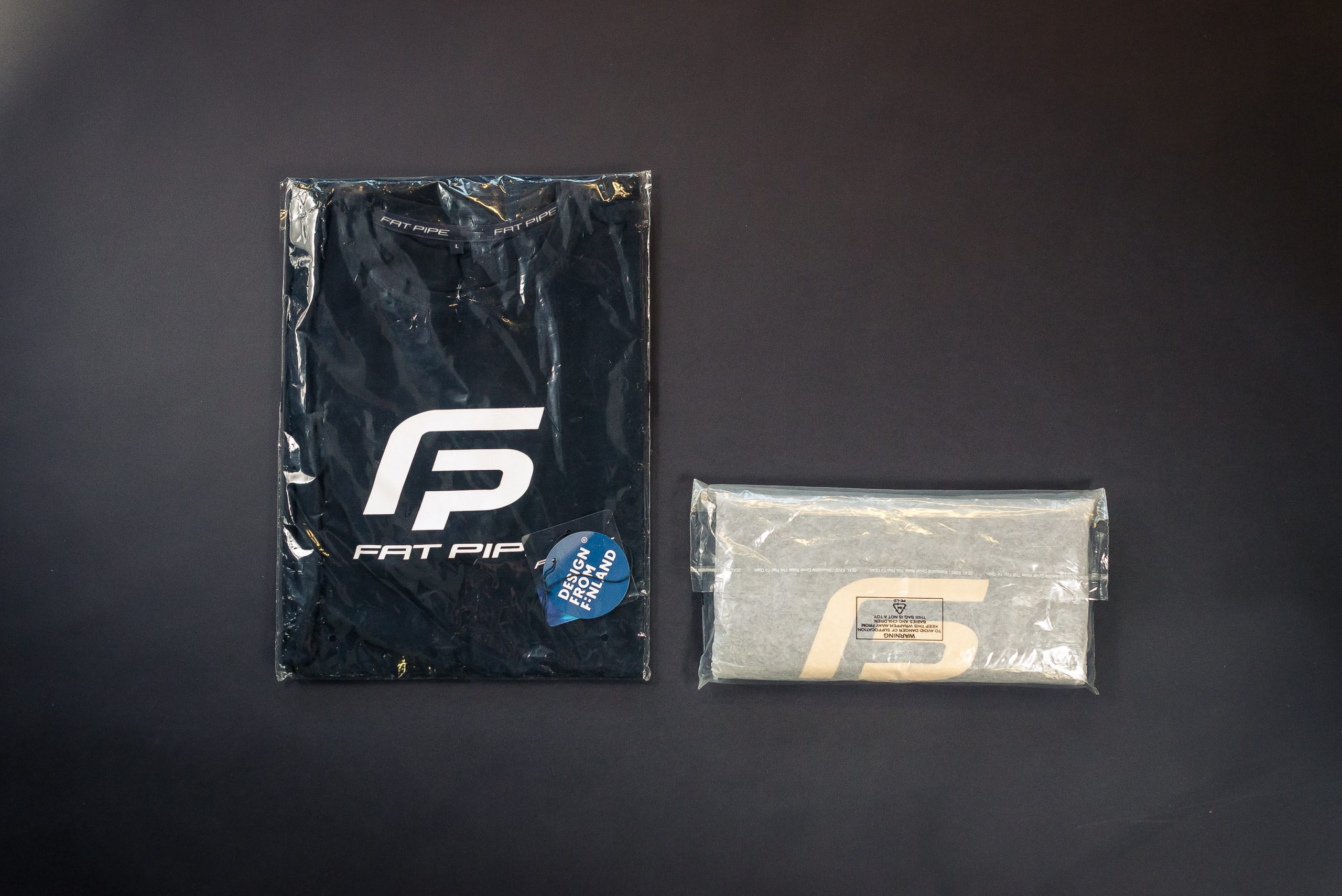
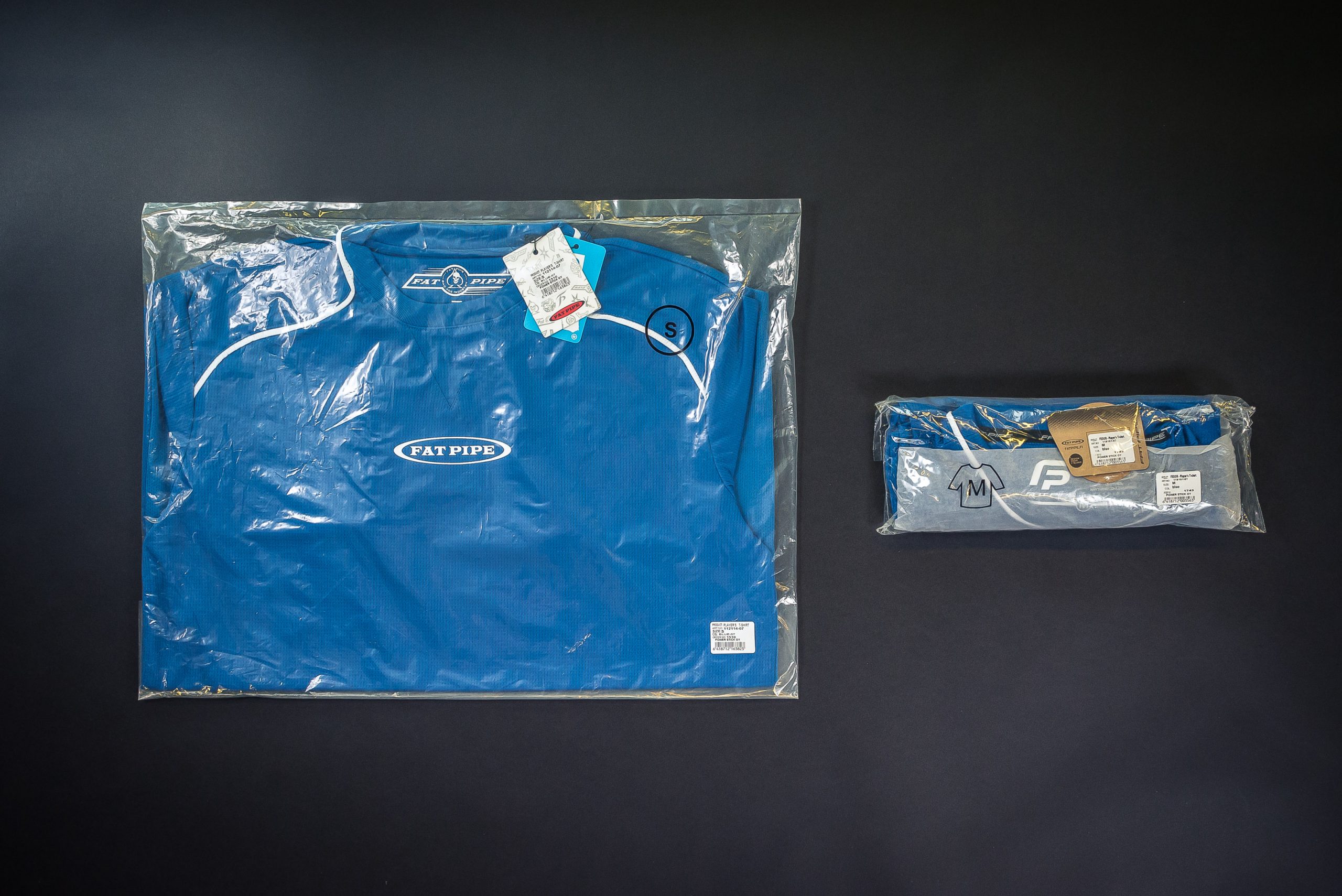
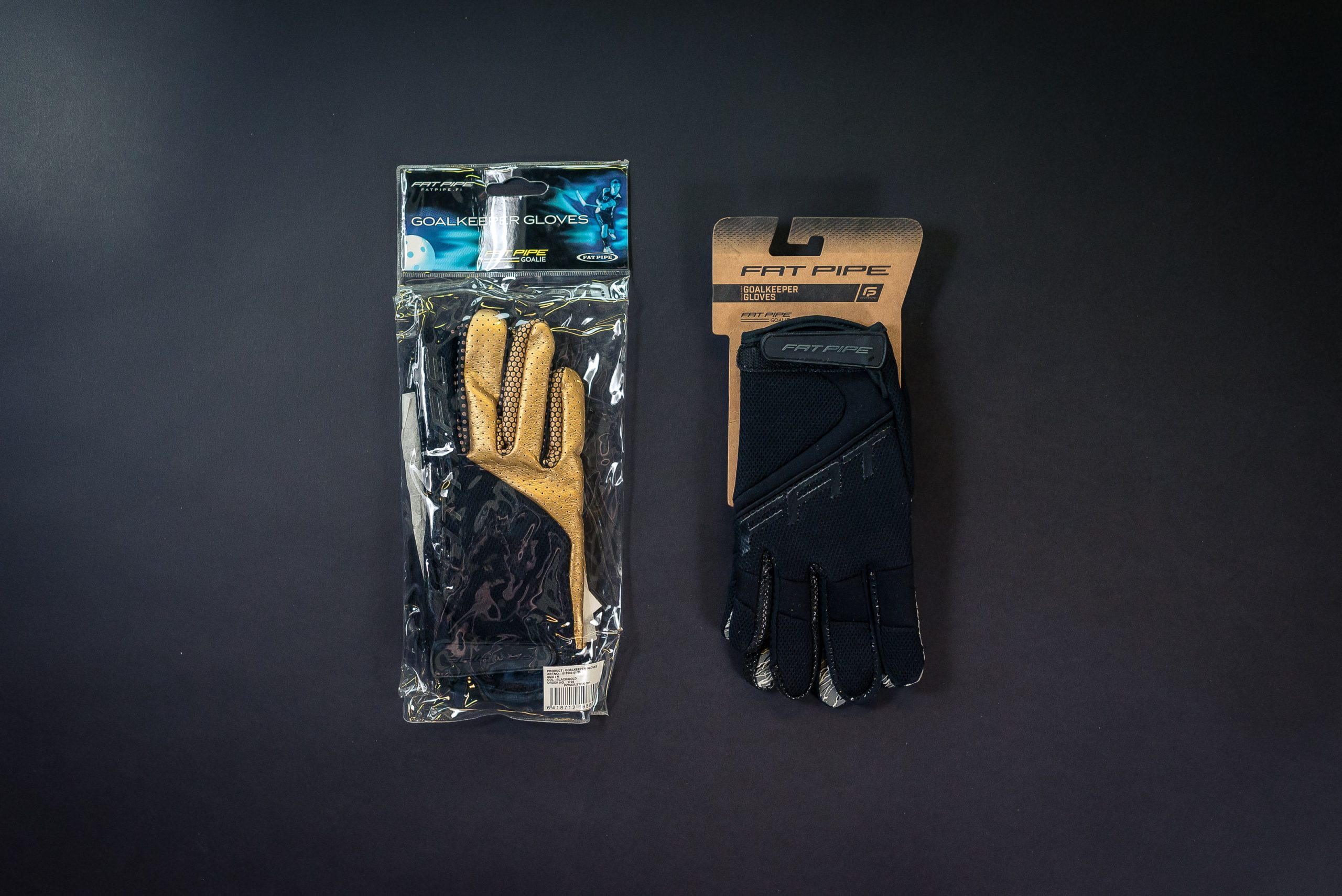
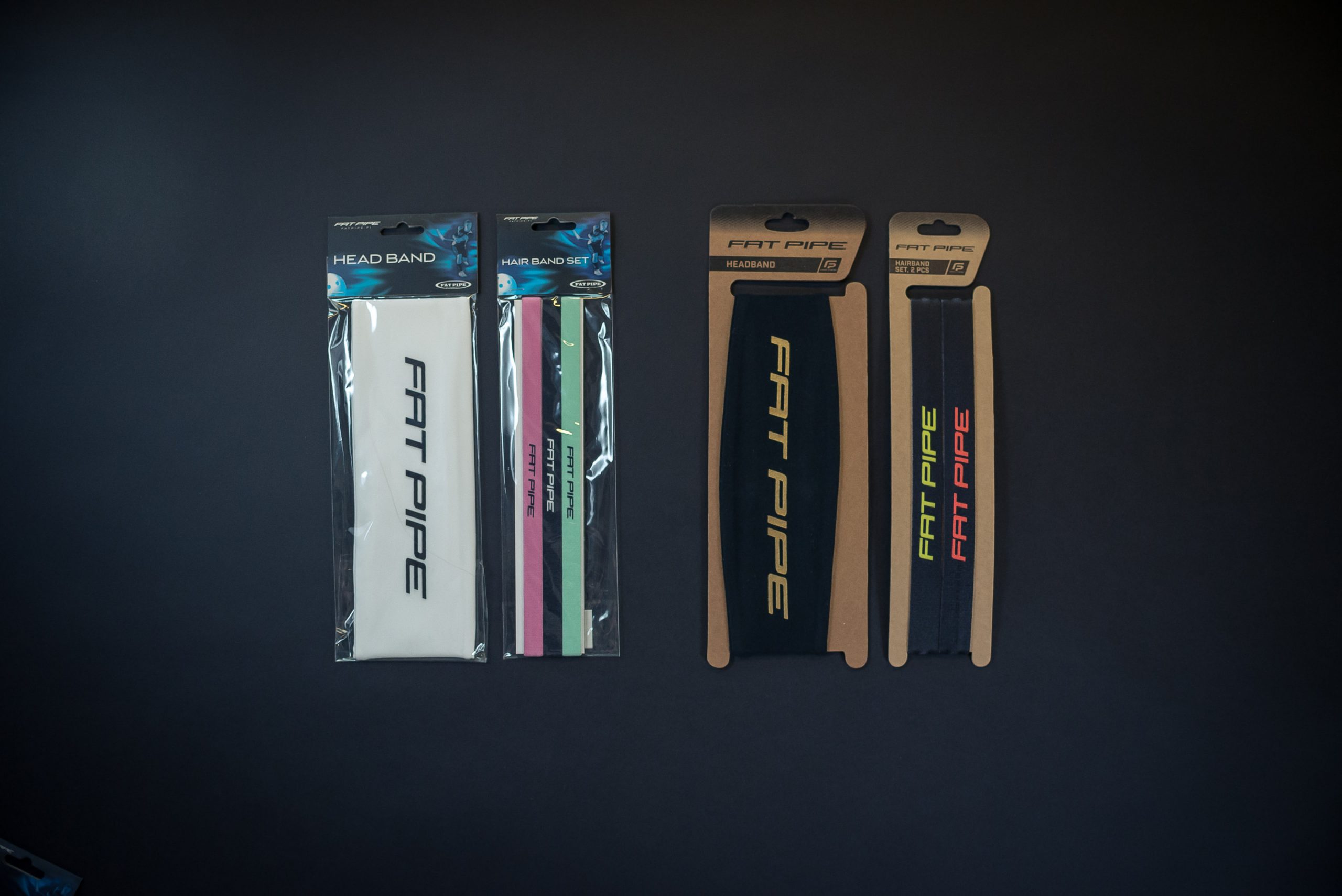
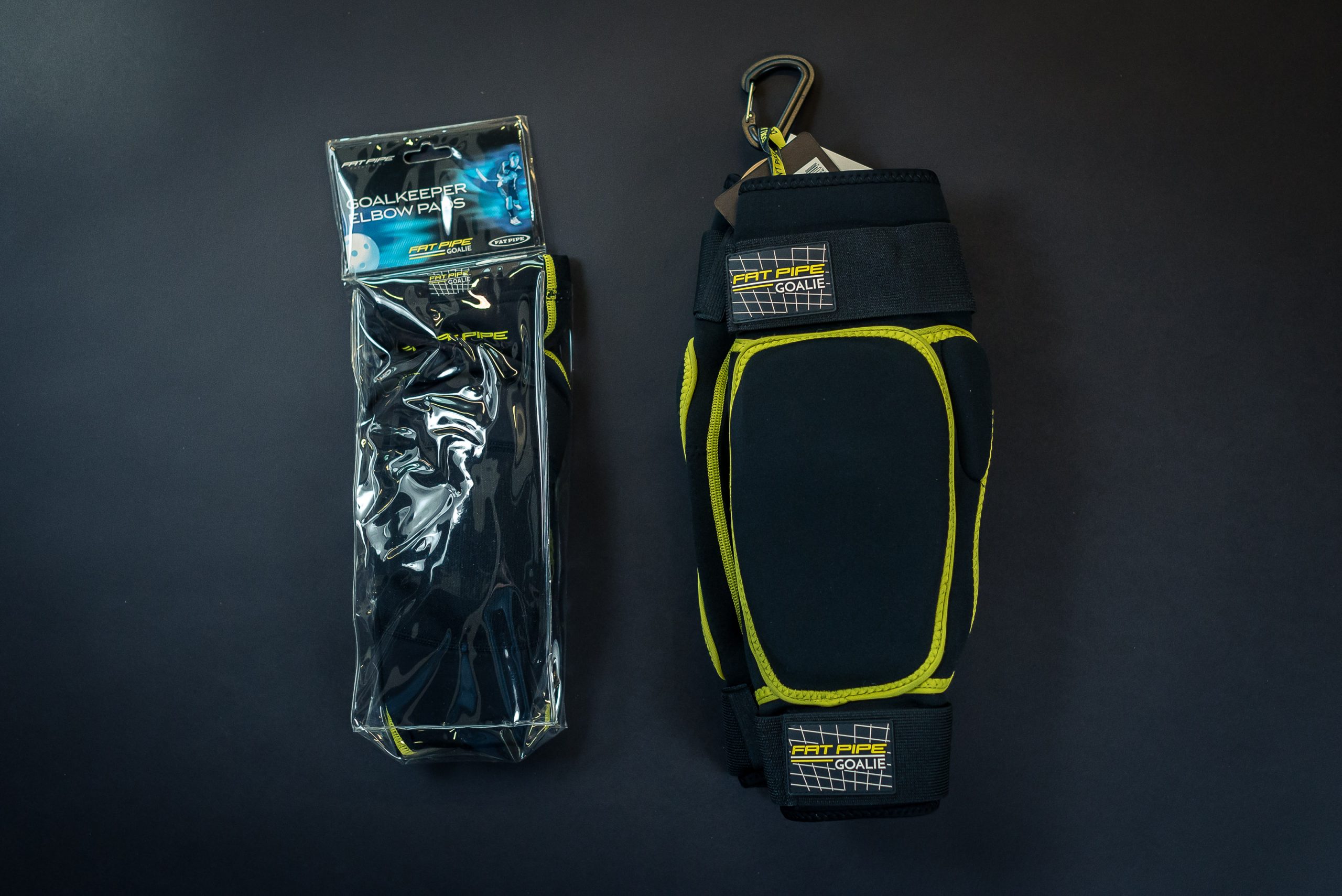
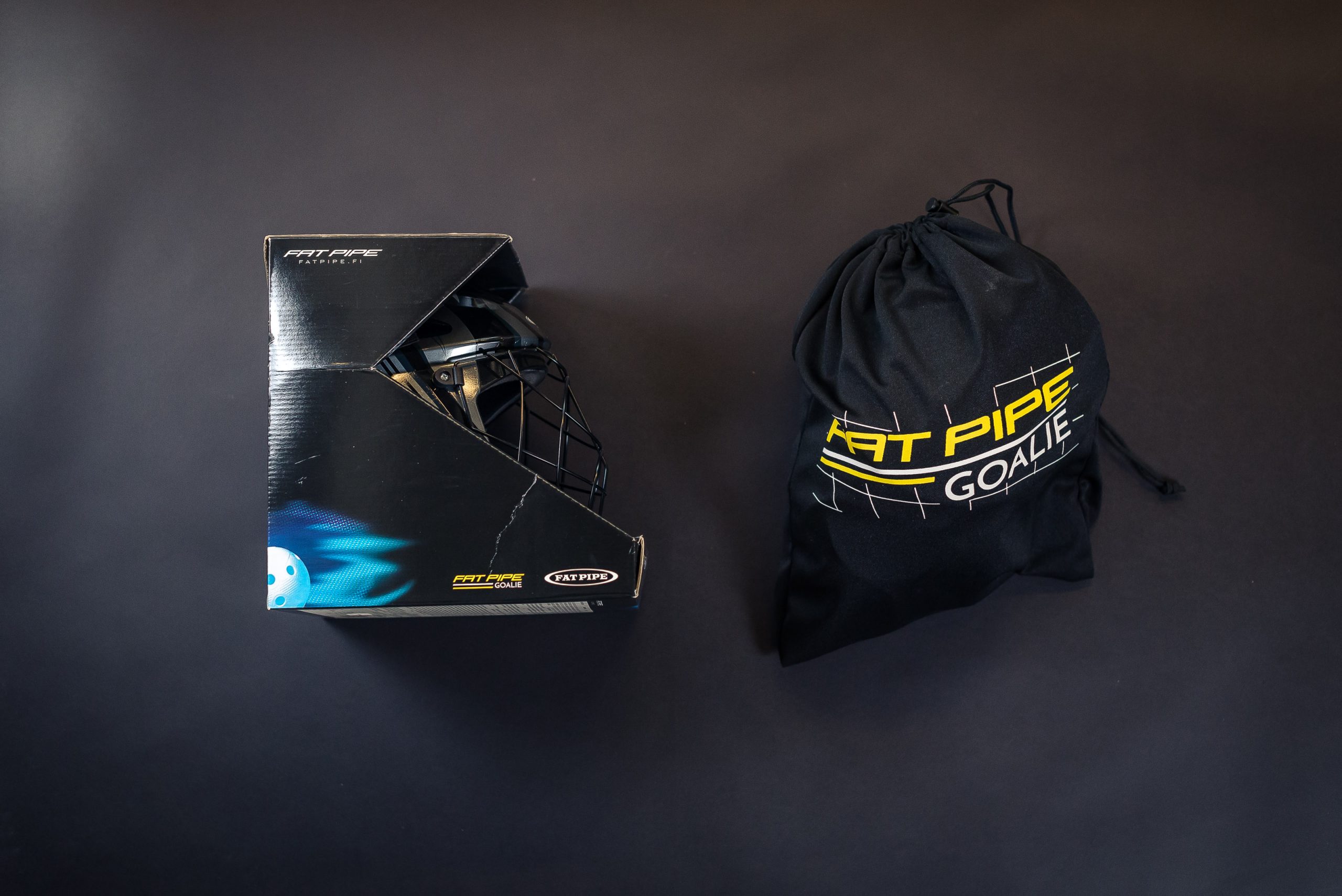
Fat Pipe’s efficient factory and production line in Vartiokylä can be scaled in accordance with the incoming volume of orders. Furthermore, we have made efforts to make waste management at our facility more efficient.
As we unload components for Fat Pipe sticks, textile products and equipment into our warehouse, and as we pack outgoing orders for our customers, we end up with a variety of cardboard and plastic waste. At our warehouse and factory, all waste materials are sorted into their respective recycling bins, which are transported with regular intervals to the waste or recycling stations.
Our company has also set up clearly labeled waste collection points throughout our office premises. They include containers for batteries, metal, paper, cardboard, plastic, hazardous waste and mixed waste, among others. All work stations are also equipped with paper waste boxes, even though we seek to work as paperless as possible.
In 2025, the collection of textile waste will become mandatory in the EU, and Finland already introduced a textile recycling system in 2023. At Fat Pipe, we have always collected and donated usable leftover materials to be repurposed by various charities. We generate very little actual textile waste, but in the event we receive used clothing through a product reclamation, for example, the garment will be recycled via the textile collection system.
Fat Pipe garments, gear, accessories and a portion of outsourced stick components are transported to Finland by ship, train or airplane, since they are produced in East Asia and the Middle East. Goods ordered from Europe are transported by truck.
We aim to schedule the production chain of textiles as precisely as possible and to plan the route carefully and well in advance together with our hauler, in order to find the most economic, ecological and expedient mode of transportation.
When we import a container or pallet of textile products, we usually choose to transport it by ship, i.e., maritime transport. It may take several weeks to arrive, but this is nonetheless one of the most ecological and economic ways for transporting heavy cargo from East Asia.
Another very ecological, and slightly faster, option is rail transport, which we also use for importing our goods from Asia. In addition, we have used combined transport, meaning that the cargo is transported in part by train, in part by ship. Rail and combined transport are time savers. Trains are a new transportation method for us, but we plan to use them in the future as opportunities present themselves. Due to the current unstable global situation, rail transport has not been a sensible, or even existing, option from Asia.
We avoid using air cargo. Granted, it is the fastest mode for transporting goods across the globe, but in terms of energy efficiency and environmental sustainability, it is the worst possible alternative.
We systematically plan deliveries to our customers and coordinate outgoing shipments to be as cost-efficient and uninterrupted as possible. We use the delivery services of trustworthy and regular partners, who we know to be responsible and provide emission reports upon request.
We also encourage our club partners to coordinate and combine their orders. We recommend that they place orders for several teams at a time, and only order according to actual needs. Our goal is to streamline our deliveries and thereby further reduce the emissions from our distribution activities.
This website uses cookies to improve your experience. For more information, see our Privacy Policy.
A total of 3.5% of Fat Pipe’s carbon footprint comes from the emissions of purchased electricity (Scope 2). The district heating used for Fat Pipe’s office premises and the procured electric power amount to 42.6 metric tons of CO₂e in our annual carbon footprint. In practice, the whole figure reflects district heating, since our procured electricity comes from hydropower, which has very small emissions. We cannot influence the source of heating directly, since our premises are rented. However, by purchasing fossil-free electric energy, our electrical emissions are almost ten times smaller than they would be by using electricity from non-renewable energy sources.
In Finland, lighting is necessary year round, and it constitutes around 37% of Fat Pipe’s annual electricity consumption. Through lighting fixture maintenance, small investments in lighting, and switching over to LED lamps, Fat Pipe was able to shrink its lighting-related energy consumption in its premises from 2017 to 2021 by as much as 46%.
Our goal is to further cut down our lighting-related energy consumption to a fifth of the 2017 level. To achieve this, we will replace the last remaining 58W light bulbs with 24W LED lamps. The economic gain from renewing our lighting system is undeniable, yet without sacrificing the quality of lighting in the working environment.
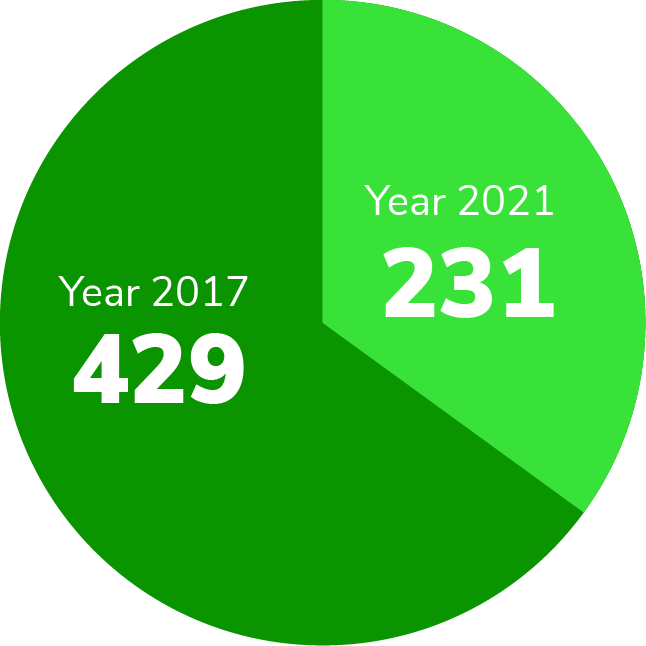






Of the carbon footprint of Fat Pipe in 2021, 6.6 metric tons of CO₂e arise from the consumption and emissions of company cars, as well as emissions from the production of new cars acquired during the year. The figure represents direct emissions (Scope 1 in the GHG Protocol Corporate Standard) and form 0.5% of the total carbon footprint. In the wider whole, this is fairly minor, but it is nevertheless something.
Reducing the number of cars and switching over to vehicles with lower emissions decreased the environmental impact arising from cars by 61%. Updating the vehicle stock also came with significant economic advantages.
Fat Pipe provides charging stations for electric cars in the property’s parking area, which can be used for employee- as well as company-owned cars as an employee benefit.
In spring 2022, employer-subsidized bicycles were introduced to the list of employee benefits in our company. Around 20% of our personnel immediately jumped at the opportunity, which further reduces the environmental impact of commuting traffic.
